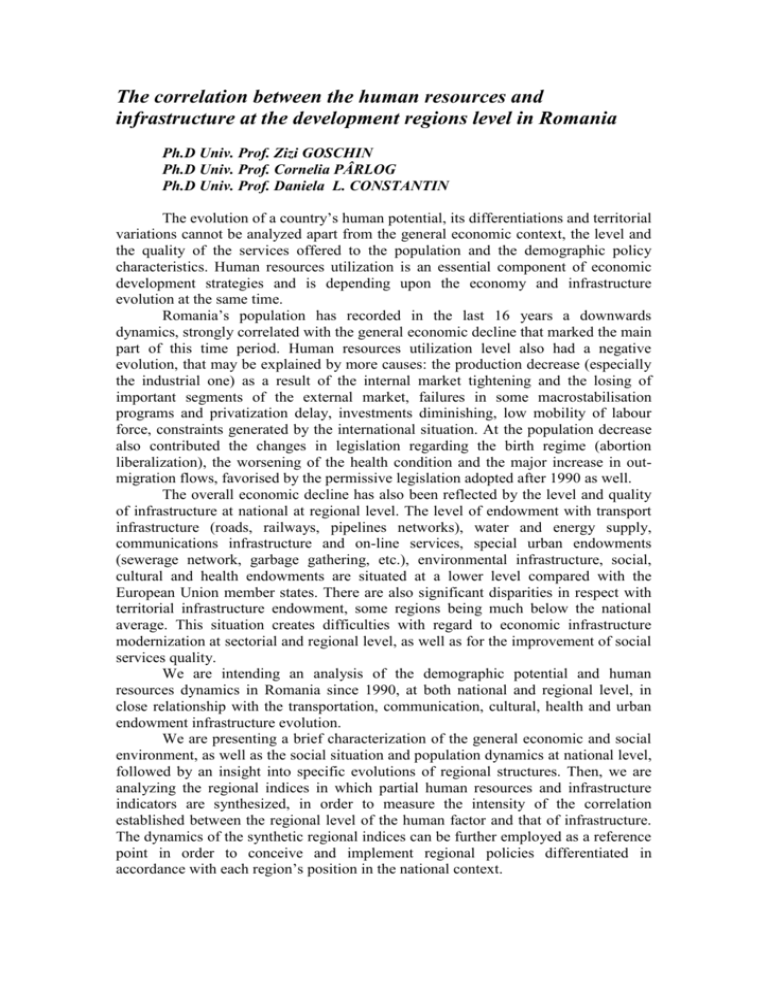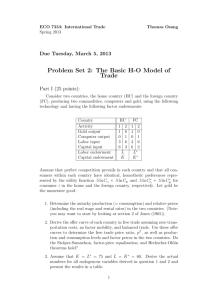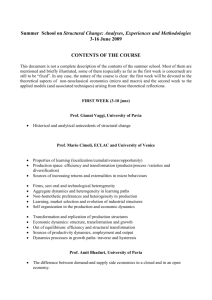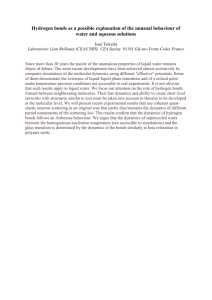The correlation between the human resources and infrastructure at
advertisement

The correlation between the human resources and infrastructure at the development regions level in Romania Ph.D Univ. Prof. Zizi GOSCHIN Ph.D Univ. Prof. Cornelia PÂRLOG Ph.D Univ. Prof. Daniela L. CONSTANTIN The evolution of a country’s human potential, its differentiations and territorial variations cannot be analyzed apart from the general economic context, the level and the quality of the services offered to the population and the demographic policy characteristics. Human resources utilization is an essential component of economic development strategies and is depending upon the economy and infrastructure evolution at the same time. Romania’s population has recorded in the last 16 years a downwards dynamics, strongly correlated with the general economic decline that marked the main part of this time period. Human resources utilization level also had a negative evolution, that may be explained by more causes: the production decrease (especially the industrial one) as a result of the internal market tightening and the losing of important segments of the external market, failures in some macrostabilisation programs and privatization delay, investments diminishing, low mobility of labour force, constraints generated by the international situation. At the population decrease also contributed the changes in legislation regarding the birth regime (abortion liberalization), the worsening of the health condition and the major increase in outmigration flows, favorised by the permissive legislation adopted after 1990 as well. The overall economic decline has also been reflected by the level and quality of infrastructure at national at regional level. The level of endowment with transport infrastructure (roads, railways, pipelines networks), water and energy supply, communications infrastructure and on-line services, special urban endowments (sewerage network, garbage gathering, etc.), environmental infrastructure, social, cultural and health endowments are situated at a lower level compared with the European Union member states. There are also significant disparities in respect with territorial infrastructure endowment, some regions being much below the national average. This situation creates difficulties with regard to economic infrastructure modernization at sectorial and regional level, as well as for the improvement of social services quality. We are intending an analysis of the demographic potential and human resources dynamics in Romania since 1990, at both national and regional level, in close relationship with the transportation, communication, cultural, health and urban endowment infrastructure evolution. We are presenting a brief characterization of the general economic and social environment, as well as the social situation and population dynamics at national level, followed by an insight into specific evolutions of regional structures. Then, we are analyzing the regional indices in which partial human resources and infrastructure indicators are synthesized, in order to measure the intensity of the correlation established between the regional level of the human factor and that of infrastructure. The dynamics of the synthetic regional indices can be further employed as a reference point in order to conceive and implement regional policies differentiated in accordance with each region’s position in the national context.











